History
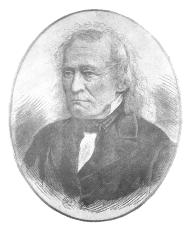
In 1797, Georg Christian Keil, together with the then rector D. Friedrich Delbrück, received the necessary licence to establish a new bookshop in Magdeburg. On 27 November of the same year, his godson Wilhelm (von) Heinrichshofen began an apprenticeship in the new Keil publishing bookshop. Around this time, it was not yet music that characterised the profile of the publishing bookshop, but rather important publications in the fields of theology, medicine, philosophy, law and fiction.
Wilhelm von Heinrichshofen
The growth of the publishing bookshop made it necessary to move to a larger building in 1800, to the house "Zum großen Christoph", where it resided (for 145 years!) until it was bombed out on 16 January 1945 .
After the death of Christoph Keil, the company became the sole property of Wilhelm von Heinrichshofen in 1806, who was involved in a variety of activities: he was primarily a publishing bookseller and published a total of 592 books between 1808 and 1848. He trained many well-known booksellers from all over Germany and, among other things, travelled to the Easter Fair in Leipzig every year (until 1876) with his horse and cart from the first year of his independence.
Heinrichshofen was also involved in the organisation of the "Great German Music Festival", which took place in Magdeburg in 1821. In collaboration with Lord Mayor Francke, the "Neue Stadttheater AG" was established in Magdeburg in 1828. The direct contact with the stage led to a concert management company being attached to the company and the publishing programme being expanded to include a new division.
Heinrichshofen had good business relations with Henriette Sonntag, Alfredo Catalani, Wilhelmine Schröder-Devrient, Niccolò Paganini, Albert Lortzing, Franz Liszt, Heinrich Marschner, Johann Nepomuk Hummel, Louis Spohr, Richard Wagner (Kapellmeister in Magdeburg from 1835 to 1836) and others. In 1872, Richard Wagner sent a branch of the laurel wreath to Wilhelm Heinrichshofen on the occasion of the laying of the foundation stone of the festival theatre in Bayreuth as a token of his grateful solidarity.
Theodor von Heinrichshofen
In 1840, Wilhelm von Heinrichshofen took his son Theodor into the company as a partner. This not only ensured the continuation of the company, but also took account of the increased requirements. Theodor von Heinrichshofen took over the further expansion of the music publishing house. In 1856, a separate branch of music engraving and music printing was established.
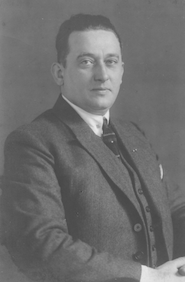 Theodor von Heinrichshofen
Theodor von Heinrichshofen
Recognised at the time as a "gap in the market", the following publishing areas were particularly cultivated:
- Textbooks for "fashionable" piano lessons
- popular dance music as well as "sophisticated light music" with special demands
- a particular focus (and still important today) was Christmas music, e.g. by Ernst Simon - here the young music publisher was a leader for a long time
Works by renowned composers such as Hector Berlioz, Franz Liszt, Carl Loewe, Heinrich Marschner, Robert Schumann etc. found their way into the publishing programme.
The company's importance beyond the local area was further enhanced in 1860 by the addition of an art dealership and a picture gallery as well as the establishment of a music lending library with over 100,000 volumes.
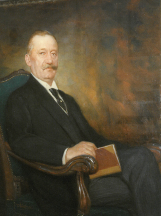
Adalbert Heinrichshofen
Wilhelm Heinrichshofen retired from the business in 1876 and died in 1881.
In 1881, Adalbert Heinrichshofen, Theodor's stepson, joined the company as an authorised signatory after graduating from high school and training with the music publisher Bote & Bock in Berlin and perfecting his pianistic training with Franz Liszt in Weimar.
In 1890, Theodor von Heinrichshofen (died 1901) sold the company to his stepson. At the same time, a major remodelling and expansion took place in order to establish an additional piano dealership, which represented renowned piano manufacturers such as Steinway and J. Blüthner.
In addition, the publishing programme was expanded by taking over old, well-known music publishers:
- 1901 Max Schimmel, Berlin
- 1902 Verlag des Königlichen Hof-, Buch- und Musikalienhändlers Max Bahn, Berlin (works by Carl Maria von Weber, Spontini, Carl Loewe, Zelter, but also first editions of Bach's works - such as the St John Passion)
- 1905 Luckhardt's Verlag, Stuttgart (mainly vocal music)
- 1912 Albert Rathke Verlag, Magdeburg (teaching music)
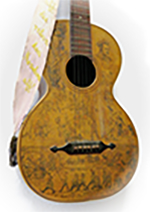
Guitar by Karl Blume
Even before the First World War, Adalbert Heinrichshofen succeeded in gaining worldwide recognition with the multi-volume "Neue Instructiven Ausgabe" (New Instructive Edition), the publication of Theodor Wiehmayer's classical piano literature. The first prize with a gold medal at the BURGA in Leipzig and first prizes at the world exhibitions in Vienna, Chicago and St. Louis underline this. Well-known composers of the time such as Karl Blume, Max Bruch, Ferruccio Busoni, Engelbert Humperdinck, Fritz Jöde, Hugo Kaun, Robert Kothe, Walter Niemann and Sepp Summer were included in the publishing programme.
After the First World War, Karl Blume published "Grün ist die Heide" ("Green is the Heath") based on a poem by Hermann Löns, first performed in a trench during the First World War - the guitar used for this came to the publishing house after the author's death.
In 1920, Theodor Heinrichshofen Jr - the son of Adalbert Heinrichshofen - joined the company after training with P.J. Tonger, Cologne and C.A. Klemm, Leipzig.
1924 saw the first division of the company:
From now on, Adalbert concentrated on the activities of the music publishing house, which had become independent. An orchestral catalogue was created.
Theodor Heinrichshofen Jr. and later his wife and their children continued to run all other business areas, including a radio and gramophone department that had been established in the meantime, as the largest company of its kind in the Magdeburg region until its destruction on 16 January 1945, after which it was managed by the family in various alternative premises until the expropriation.
In 1927, the "Maestoso series" from the Drei-Masken-Verlag, a collection of all classical works such as overtures, symphonies, fantasies and pieces for orchestra, was taken over.
Composers of "sophisticated light music" who were popular at the time, such as Nico Dostal, Carl Robrecht, Ernst Fischer, Franz Grothe, Jonny Heykens, León Jessel and Hanns Löhr, graced the publishing programme, as did orchestral works by outstanding composers such as Richard Strauss, Francesco Malipiero, Franz Schreker and Arnold Schönberg.
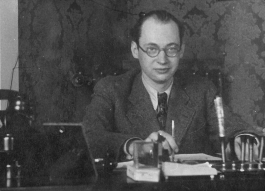
Otto-Heinrich Noetzel
Otto-Heinrich Noetzel, the grandson of Adalbert Heinrichshofen, joined the music publishing house "Heinrichshofen's Verlag" in 1932, only to work together with his grand-father for a few months until his death.
In the same year, the publishing house Edition Adler was acquired with outstanding works of contemporary music such as Eugen d'Albert, Leo Blech, Max Brand, Henry Dixon Cowell, Edwin Fischer, Charles Ives, Wilhelm Kempff, Mark Lothar, Emil von Reznicek, Charles Ruggles, Franz Schreker and Karl Wiener. In addition, relevant opera works from this publishing house expanded the range (d'Albert, "Mister Wu", Haydn/Lothar "Die Welt auf dem Monde", Richard Hagemann "Tragödie in Arezzo", Reznicek "Der Gondoliere des Dogen", Schreker "Christopherus"). Westend-Verlag, which was acquired somewhat later, also expanded the range of the publishing programme.
With authors such as Heinz Schüngeler, Waldemar Twarz and Erich Valentin, the publishing house catered to the growing demand for instructional music and the interest in newly published works by classical masters.
Otto-Heinrich Noetzel's artistic streak was particularly noticeable in the external design of the editions and Heinrichshofen's Verlag soon distinguished itself favourably from its competitors.
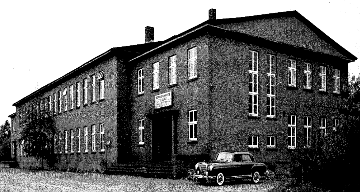
The publishing building in Liebigstraße in Wilhelmshaven
The Nazi regime used bans to hinder the activities of many authors promoted by the publishing house, such as Henry Dixon Cowell, Karl Geiringer, Richard Hagemann, León Jessel, Julius Klaas, Ludwig Landshoff, Joseph Gustav Mraczek, Paul A. Pisk, Hans Ferdinand Redlich, Arnold Schönberg, Franz Schreker, Karl Wiener and others. The establishment of a branch in Vienna provided temporary relief. Through general agencies in London and New York, many of the works banned in Germany were able to find their way to the public until well into the war.
After the relatively undamaged publishing house building was confiscated in 1946, the company headquarters were relocated to the Leipzig branch established in 1942. The refusal of printing licences (except for art postcards) prevented the music publishing house from being rebuilt, so the business was expanded to include a large range of music supplies. The circumstances of the time made a move to the western zones appear advisable, which led to the final move to Wilhelmshaven in 1948.
A new publishing project was the development of a catalogue of music for recorders. Initially, the editions were less extensive and elaborate.
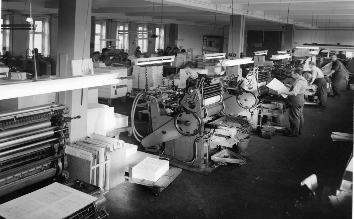
Printing machines in the lower part of the publishing building
The few West German offset printers were not interested in printing small runs of music. For this reason, the first printing press was installed on 5 January 1950, thus restarting an old line of business in order to initially meet their own needs.
All publishers starting up in West Germany were in a similar situation with regard to music printing, so there was plenty of demand for printing capacity and the one press was soon no longer sufficient. In 1953, the company moved to the "Heinrichshofen-Haus", a former naval building in Liebigstraße. The print shop and the range of bookbinding services could thus be expanded. Numerous music publishers at home and abroad appreciated the high quality and reliability.
At the same time, Otto Heinrich Noetzel's music publishing house was continued in the spirit of his ancestors who had once been active in Magdeburg: School and educational music in particular, especially Willy Schneider's piano school work, found numerous customers in Germany, Europe and overseas.In the field of serious music, new connections were forged with composers and publishers such as Francis de Bourgignon, Helmut Degen, Hermann Erpf, Harald Sæverud, Richard Rudolf Klein, Wilhelm Keller, Dr Arthur von Arx, Louis Ferdinand von Preußen, Hermann Schroeder, Hermann Erdlen, Prof. Heinrich Lemacher, Franz Alfons Wolpert. Arno Knapp, Fritz Koschinsky and many others. New authors were also acquired in the field of light music.
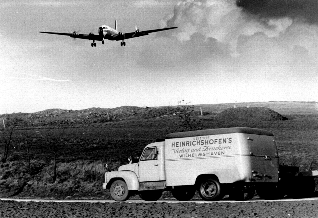
In 1954, Otto-Heinrich Noetzel began to set up the "Otto Heinrich Noetzel Verlag" as a sister company out of fear that the expropriated but still not cancelled old company in Leipzig might reprint the Wilhelmshaven new editions.
Otto-Heinrich Noetzel was particularly focussed on sales via the music trade due to his training in the product range and large assortment. Contacts through representatives, at music fairs and his experience were particularly important to him for the further development of the catalogue and especially the title design by himself and led to the growth of the publishing house.
In 1957, the publishing catalogue again had 1300 available titles.
In Europe, where the individual countries were still demarcated by strict customs borders, it made sense to set up branch offices as a distribution channel, so that in 1954, for example, a branch office was opened in Amsterdam, in 1961 in Locarno (Switzerland) and further representative offices in London, New York, Paris, Rome, Sydney and Vienna. In 1964, Otto-Heinrich Noetzel acquired the large-scale music retailer Türk in Hamburg, which was expanded into a sister company and provided a good overview of the entire industry and existed until 2001.
New accents in the publishing house were also realised through the acquisition of further publishing houses:
- 1964 Impero Verlag, Wiesbaden with works of contemporary music by Milko Kelemen, Jean Martinon, Makoto Moroi, Yoram Paporisz, Constantin Regamy, Josef Tal and others.
- In 1967, the Hera publishing house, which had been very important in the book sector in the post-war period, was purchased. This was also the new beginning of the book publishing branch of the company. After strong growth, this branch became independent in 1986 under the name Florian Noetzel GmbH, Verlag der 'Heinrichshofen-Bücher' and left the group of companies.
- 1969 Publishing house Vinzenz Hladky, Vienna with guitars and mandolin music
- 1971 Sirius Verlag, Berlin with contemporary music by Max Baumann, Siegfried Borris, Dietrich Erdmann, Hermann Haller, Jan Koetsier and others.
The following were published
- successful works by the authors Klaus Huber, Franz Anton Wolpert, Wladimir Vogel, Egon Wellesz
- Editions by music educators Peter Heilbut, Gertrud Keller, Willy Schneider
- Editions by the publishers of early music (Consortium) Herbert Kölbel, Helmut Mönkemeyer and Hugo Ruf
After 55 years of successful management through the eventful times of the 20th century, Otto-Heinrich Noetzel died in 1987 in Locarno.
His wife Eva Noetzel and his son-in-law Dr Viktor Kreiner continued to run the company as managing directors.
The publishing houses and the print shop are still owned by the family today, although the management is now in non-family hands following the retirement of the last two members of the family.
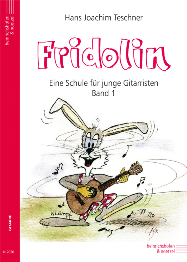
In the 1980s, the extremely successful guitar school "Fridolin" by Joachim Teschner found its way into the publishing programme. To this day, Fridolin accompanies young and old guitarists alike into the musical world of the guitar with this textbook and many other volumes.
Always keeping an eye on the zeitgeist and methodological and didactic developments, in the 1990s the focus was on the recorder, chamber music for wind instruments, editions with popular music and literature for adults.
Willibald Lutz, Ulrich Herrmann, Sieglinde Heilig, Maria Swoboda, Christoph Lipport, Uli Molsen and Anja Elsholz were acquired as new authors for the publishing houses.
The work of teachers was supported in the area of classroom music-making with editions by Astrid Riese, Uli Molsen and Rainer Gräßler, for example.
Proven textbooks and series were supplemented by music books such as "Straßenmusik" by Uwe Heger, "Fridolin" by Hans Joachim Teschner and "Spielbuch für Altblockflöte" by Gerhard Braun. At the same time, the focus remained on the promotion of contemporary music. Both existing contacts and new young composers to be promoted found their way into the publishing programme, such as Werner Heider, Max Baumann, Graham Waterhouse, Christian Ernst and Mitsch Kohn.
Many technical developments on the one hand, but also developments on the music market on the other, which led to increasing concentration but also internationalisation of the industry, are the reasons for the reduction in 2013 to the "Heinrichshofen-Haus" as the sole headquarters of the publishing houses and to a small internal print shop, which initially worked primarily to meet the publishing house's own needs. In the meantime, word of the quality of the commissioned work has spread, so that other well-known publishers are also placing print orders.
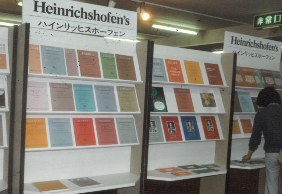
The publishers were proudly presented at the music fairs in Tokyo in 1985 and 1989, at the "Music Show" in Sydney and the "Musicora" in Paris.
The publishers were and are regularly represented at the Frankfurt Music Fair and later at the Leipzig Book Fair. But the publishers' varied programme has also been presented at festivals for recorders, early music and other events.
To this day, travelling representatives ensure that music shops are informed about new products and promotions from the publishers.
The publishers are (supporting) members of the:
- GEMA
- German Music Publishers Association
- Association of Music Schools
- Association of independent music schools
- Friesland District Music School
- European Recorder Teachers Association
